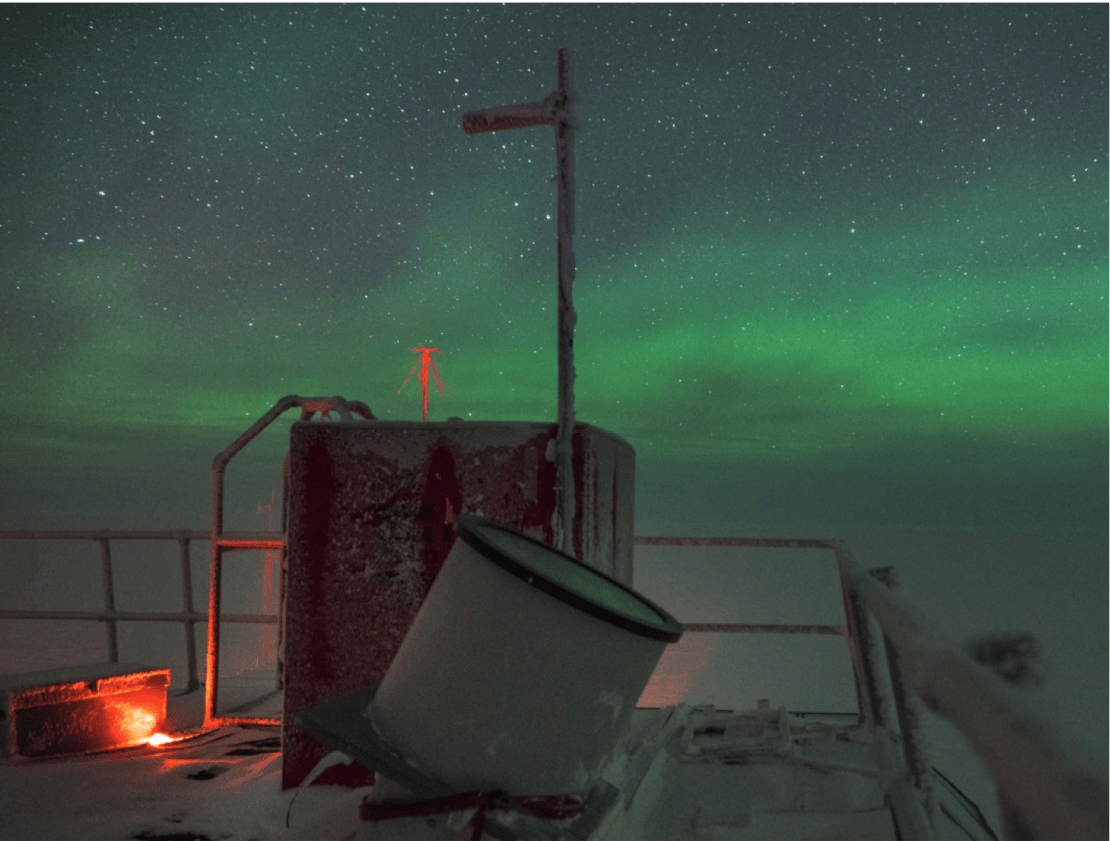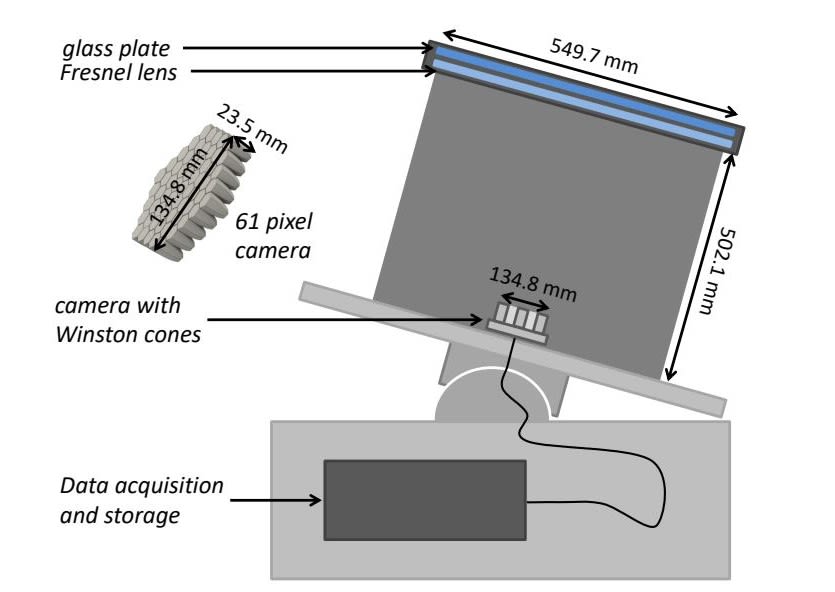The South Pole is a harsh environment: It’s far away from civilization, difficult to access, elevated over 9,000 feet above sea level, has practically zero percent humidity, receives no sunlight for nearly eight months—oh, and it’s freezing cold.
For South Pole experiments like the IceCube Neutrino Observatory, all instruments—whether in the ice or on the surface—must undergo feasibility studies to make sure they can operate in the harsh Antarctic conditions. Optical instruments, especially, are subject to icing and snow accumulation. Recently, the IceCube Collaboration proved the successful operation of a new instrument, an imaging air-Cherenkov telescope, at the Pole. They outline the details of the study in a paper published yesterday in the Journal of Instrumentation.

The IceCube Neutrino Observatory is an array of over 5,000 digital optical modules (DOMs) attached to cables that have been lowered into 86 holes drilled in the South Pole ice. This in-ice component is enhanced by a surface array called IceTop, which is made up of 162 tanks of frozen water that each contain two DOMs. Together, these arrays help researchers get a more complete picture of properties of high-energy particles from outer space, known as cosmic rays.
As IceCube expands, the collaboration seeks ways to enhance the observatory’s sensitivity to particles called neutrinos that are produced by cosmic rays. Multiple detector systems have been proposed to boost IceCube’s sensitivity, one of which is the IceAct project: an array of air-Cherenkov telescopes.
The IceAct imaging air-Cherenkov telescopes are small and cost-effective. They use a camera based on novel semiconducting photosensors to detect Cherenkov light: radiation that is emitted when high-energy particles in the atmosphere travel faster than the speed of light in air. (IceCube’s DOMs also detect Cherenkov light, but it is generated by ultrafast particles passing through ice rather than air.) “Since these particles originate from cosmic rays interacting with Earth’s atmosphere, the measurement allows a precise reconstruction of the cosmic ray air-shower properties,” says Erik Ganster of RWTH Aachen University, a lead on this study.
By detecting this Cherenkov radiation in Earth’s atmosphere, the IceAct telescopes provide IceCube with an independent detection channel for cosmic ray-induced air showers. This additional information will allow scientists to do a number of things, including benchmarking the directional accuracy of IceCube, which is important for evaluating IceCube data quality and for improving reconstruction methods.
IceAct would also allow scientists to measure cosmic ray composition—which is extremely important to understand and validate current models for determining the origin of cosmic rays—and improve the IceTop air shower reconstruction. Finally, IceAct would reduce the muon background that originates in air showers above IceCube by providing an air shower “veto”; this will improve the search for astrophysical neutrinos from the Southern Hemisphere.

With these advantages in mind, IceCube researchers had to test whether this new optical system could work jointly with IceCube. So, in January 2016, they deployed the first seven-pixel IceAct demonstrator telescope at the South Pole on top of the IceCube Laboratory, located in the center of the IceTop array above the in-ice component. It took data for several months during the 2016 Antarctic winter.
Then, using a large set of the recorded data from that time period, researchers identified events that were detected by both IceCube and IceTop so that they could analyze the properties of coincident events and compare them. They also evaluated the camera and sensor stability as well as the dependency on atmospheric conditions to measure the stability of the data taking.
“Overall, the demonstration was successful. We proved that the operation of optical instruments under the harsh conditions of the South Pole environment is challenging but definitely possible, which is a big achievement,” says Merlin Schaufel, also of RWTH Aachen University, another lead on this study. “We were able to prove the detection of coincident air showers together with IceTop and IceCube. From the data we found that the arrival directions are very compatible with the field of view of the telescope. The camera showed a good response stability.”
The data showed that calibration of IceCube is feasible for a telescope with a larger camera that has better image reconstruction and greater field of view.
“The small, lightweight, and cost-effective design of the telescope, together with the proof of its robustness, is an important step toward the installation of a large array of IceAct telescopes at the South Pole,” says Ganster. He notes that the design is also interesting for observatories other than IceCube: Prototypes have already been operated with HAWC in Mexico and H.E.S.S. in Namibia, two gamma-ray observatories.
After the successful proof-of-concept study with the seven-pixel demonstrator telescope, the researchers have deployed a 64-pixel telescope at the South Pole in 2018 and a second in 2019, about 220 meters apart. These upgraded telescopes can record roughly the same number of events in a few hours as the demonstrator telescope was able to record in a full week. The 2019 Antarctic winter, especially, provided very promising data from the two telescopes. They are able to provide stereoscopic images of the air showers that will significantly improve the reconstruction capabilities.
More telescopes are currently under production to be deployed in the 2020-21 and 2021-22 austral summers. Adding more telescopes will further improve the stereoscopic detection and increase the total field-of-view, which the researchers say will allow them to reach their science goals.
info “Design and Performance of the first IceAct Demonstrator at the South Pole,” IceCube Collaboration: M. G. Aartsen et al., Journal of Instrumentation 2020 15 T02002, iopscience.iop.org, arxiv.org/abs/1910.06945